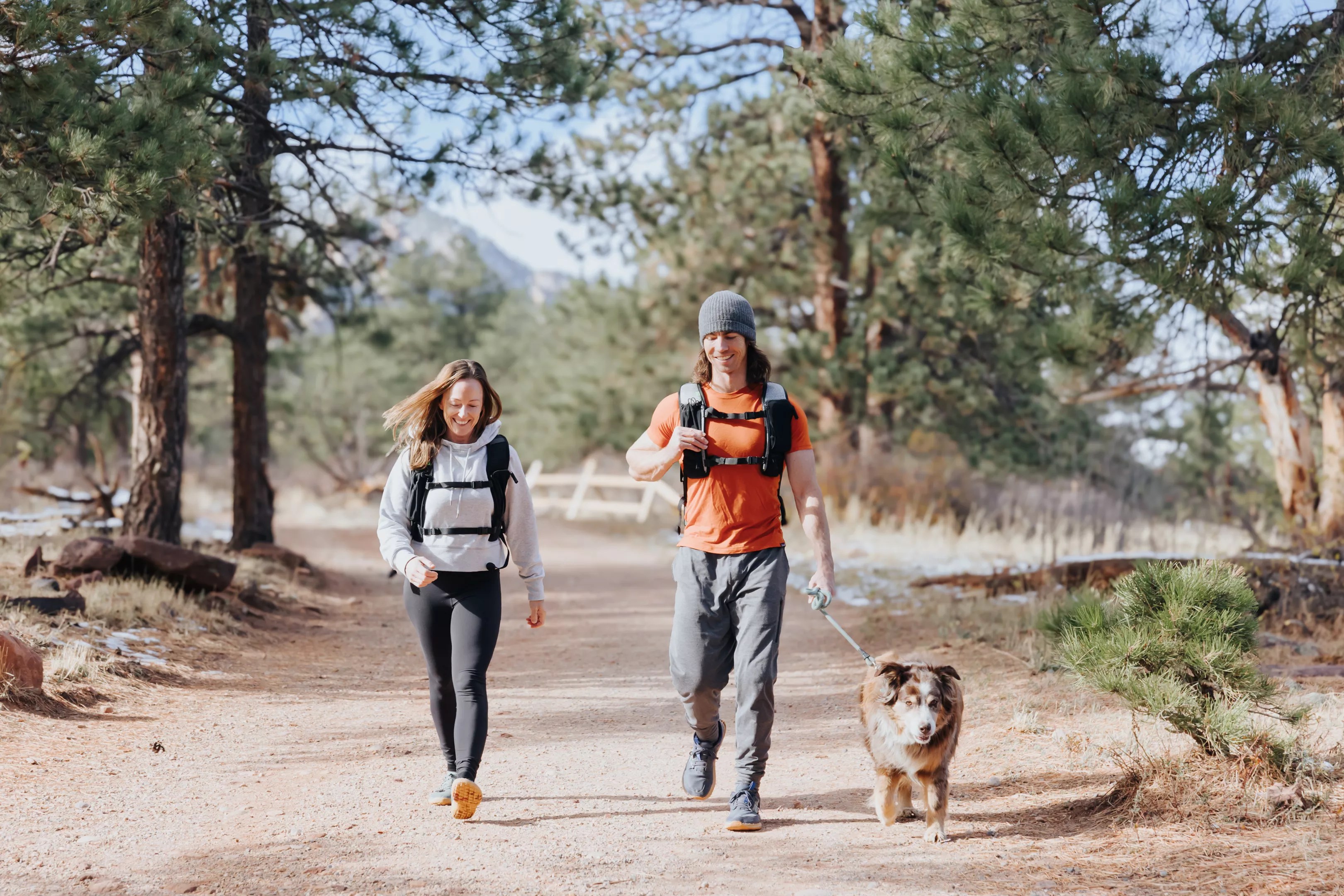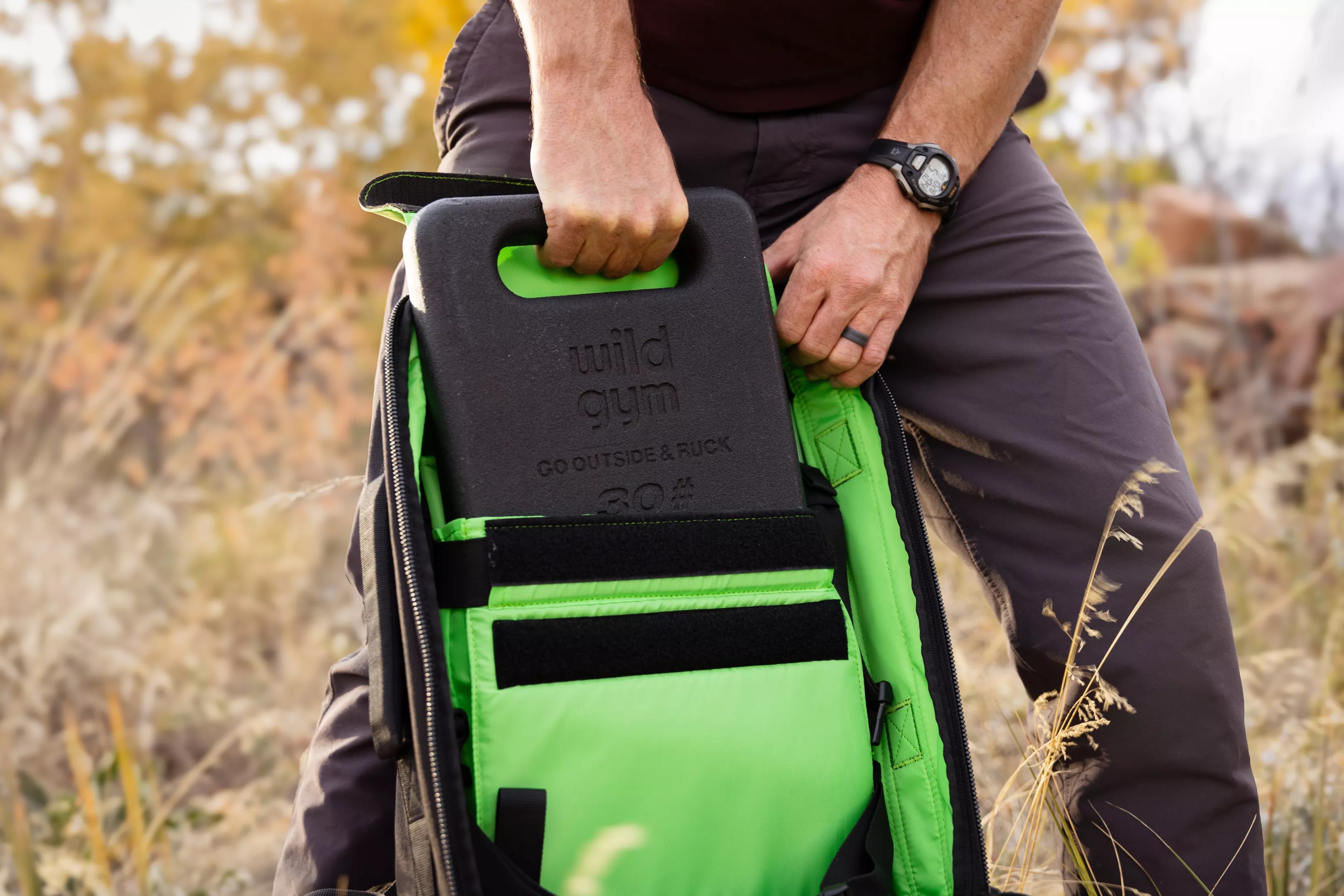
Anna Vinson

Audio By Carbonatix
Anna and Dan Vinson have been rucking. No, that isn’t a typo; get your mind out of the gutter. Actually, rucking is one of the latest hiking trends in Colorado, spurring Facebook groups, local events and an uptick in Google searches. “I see it almost every day now, which I did not see even six months ago,” says Dan, who lives in Superior with wife Anna. “It just seems to be growing exponentially.”
So, what the ruck is it? Simply put, it’s just walking with extra weight. “Rucking is intentionally adding weight for the extra workout benefit, versus just throwing a water bottle and jacket in your pack. The intentional addition of weight is what really separates it from just hiking,” Dan says.
And why would someone want to put that weight on their shoulders? According to the Vinsons, it creates versatile and accessible exercise that is lower impact than running, easy to do with friends, and a good way to build strength and endurance. “It’s cardio that doesn’t suck,” Dan says. “It’s great for cardio, building muscles and bone health. It burns up to three times more calories than just walking alone. And you’re outside, and there’s so many benefits to being outside.”

Anna and Dan enjoy rucking because they can do it when they’re out walking with their dog, kids or friends.
Anna Vinson
Will you step up to support Westword this year?
At Westword, we’re small and scrappy — and we make the most of every dollar from our supporters. Right now, we’re $22,000 away from reaching our December 31 goal of $50,000. If you’ve ever learned something new, stayed informed, or felt more connected because of Westword, now’s the time to give back.
Anna and Dan own Wild Gym, a small fitness business in Superior, where rucking is one of the main activities the business promotes. Dan was a Division 1 college athlete and played lacrosse in college, then became a wilderness ranger and wildland firefighter for five seasons. “During this entire time, I was rucking,” he says. “A big part of our training for wilderness and firefighting was walking with weight, and I didn’t even know it was called rucking at the time, I would just call it a heavy hike. When I started seeing rucking pop up, I was like, ‘Oh, wow, I’m doing this already.'”
Except he didn’t exactly have the right gear. He would throw a kettlebell, dumbbell or heavy sandbag into his hiking backpack, which wasn’t designed to hold weight that way. “It never felt right, and it was annoying to have to unpack and repack it,” he says. Plus, his traps were screaming.
A couple of years ago, Dan started drawing an ideal rucking backpack on a napkin, creating a design that combined a hunting backpack with a trail running vest. The final product has an aluminum frame that hugs your back, padding, a pocket to hold and evenly distribute the weight, and a phone and water bottle holder. Wild Gym’s rucking packs are manufactured in Vietnam at a blue chip fairtrade factory, Anna says. Wild Gym not only sells the packs, but the cast-iron weight plates that go inside. “You want the weight in your upper middle back for balance and comfort, so our plate pocket sits right in that position,” Dan says.
Wild Gym offers ten, twenty and thirty-pound weight options. “In the general rule of thumb, we suggest to folks who are just starting if you weigh less than 150 pounds, to start with ten pounds. If you weigh over 150 pounds, to start with twenty pounds. It’s always better to start a little lighter, ease into it and give yourself room to grow and play the long game,” Dan advises.

Wild Gym’s rucking pack and metal plate.
Anna Vinson
Only a few companies offer packs with changeable weights. Wild Gym rucking packs go for $235 with weights for $69 to $89, while competitor GORUCK sells packs for $255 and weight plates for $75 to $120.
Who’s using the packs to ruck? Just about everybody, the Vinsons says. “We have a lot of customers who are women looking to build bone density and add something to their regular walks,” Anna notes. “A lot of our customers are newbies who never heard of rucking, stumbled upon a Facebook or Instagram ad, and have really enjoyed it.” They’ve seen cancer survivors getting into rucking since chemo drugs leech out bone marrow; runners who are recovering from injuries or training for marathons are also out rucking.
“I use rucking to train for backpacking, so I can go on a backpacking trip in the summer and not have it be torturous,” Anna adds. Dan’s mom, who is in her seventies, regularly rucks, which has helped manage her symptoms of osteoporosis. “She takes one pill once a month now,” Anna says. “Just by adding this simple exercise, she’s made all those gains.”
For those interested in getting into rucking, Dan advises not to do too much too soon. Take it slow and easy at first, and consult your doctor if you have any health concerns. Also, you don’t need special gear right away.
“You can just start,” Dan says. “Throw in whatever it is, water, cans. You can always level up once your traps are screaming at you from using your backpack that’s not really built for that.”